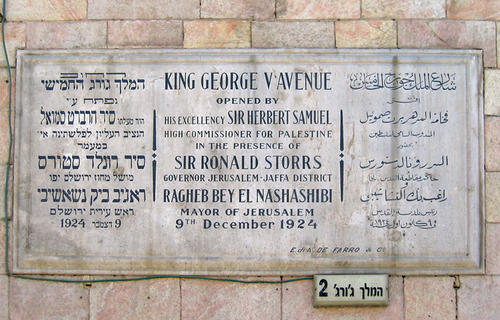British and French Expeditions to Italy, the Balkans and the Near East (1915-20)
The British Military Occupation of Palestine and Jerusalem 1917-1920
Trinity College Dublin
Princpal Investigator: Professor John Horne
Project Member: Dr Joseph Clarke
Project Member: Dr Mahon Murphy
The British and French expeditions of the First World War sent armies to both support a faltering ally, Italy, after Caporetto in October-November 1917 and to confront Ottoman and Bulgarian forces in the Balkans and across the Middle East from 1915 onwards. The research focused on the Italian, Macedonian and Palestinian campaigns as case studies comparable to those of the 1790s.
In the Italian case, the British and French came to the rescue of an ally viewed both as a cradle of European civilization and as a modern nation state. However, their experience here was often one of acute culture shock as they encountered an apparently more primitive army and society. The study examines how the British and French saw themselves as conscious ‘modernizers’ and the bearers of more ‘advanced’ values in both the military and civilian spheres. The British expedition to Palestine stands in contrast to this. Here the British were fighting a multi-ethnic Ottoman army in an imperial domain for both forces. The project’s focus here was on the British army’s relationship with its base in Egypt and particularly on its presence in Jerusalem from the city’s capture in December 1917. Jerusalem was ruled by a British military administration under General Sir Ronald Storrs until 1921 when the British Mandate in Palestine was formally established. Like the French in Egypt a century earlier, the British were acutely conscious of becoming custodians of a place of exceptional historical, archaeological and religious significance. But they understood this context as a pre-national one and saw their role as exploring and protecting this patrimony while administering the area in question as a colony. The impact of the expedition on both the soldiers and on the indigenous population in Jerusalem was assessed until the early 1920s, when the military command gave way to a more conventional colonial administration.
Macedonia was the intermediary case. As in northern Italy, much of the combat here occurred in the sparsely populated countryside, but the rear areas were quite different, and Thessalonika in particular became a major Allied base. How French and British officers and soldiers understood their relations with the multi-ethnic city and the very different countryside, and how the peoples of the region responded to them was the major focus of the study. In both Palestine and Macedonia, the use of large numbers of non-European colonial troops (tirailleurs sénégalais and Indian soldiers) was a distinctive feature of both expeditions. The interactions in question were thus not only those between Western Europeans and the supposedly more primitive peoples of the Balkans and the Middle East, but between the latter and a hierarchy of different colonial races.
This project was closely connected to the project about French military expeditions in Italy (1796-99) and Egypt (1798-1801). In both strands, the variables to be established were: the various forms of official and informal interaction between the expeditionary forces and the indigenous populations, those populations’ responses and the situation at the expedition’s end. The long-term effects of these cultural exchanges were beyond the scope of the study, but the comparison between expeditions in different contexts and periods permitted wider questions to be asked concerning the relationships between Europeans and between Europe and the extra-European world over the long 19th century. In each case, research focused on a wide range of both official sources - campaign papers, military records, French postal control records etc., and personal testimonies - private correspondence, diaries, and memoirs reflecting the experience of both the occupier and the occupied.
